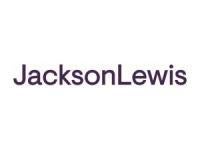Takeaways
- OSHA’s recent proposed rules reflect a significant deregulatory agenda, signaling a rollback of existing obligations across industries.
- A major proposed change would limit OSHA’s ability to cite employers under the General Duty Clause for hazards deemed “inherent and inseparable” from certain professions in high-risk sectors.
- OSHA proposes rescinding or revising numerous standards it considers outdated or duplicative, shifting toward performance-based compliance rather than prescriptive mandates.
Related links
- Federal Register: Proposed Rules
- “Unleashing Prosperity Through Deregulation” (EO 14192)
- Federal Register: Construction Standards-Advisory Committee on Construction Safety and Health
Article
The Occupational Safety and Health Administration (OSHA) has published over two dozen proposed rules in the Federal Register on July 1, 2025, marking a sweeping regulatory initiative that impacts multiple industries. Although many of the proposals aim to modernize outdated standards, several signal a clear deregulatory shift — particularly in how OSHA intends to scale back or withdraw certain long-standing obligations for businesses.
Many of these recent Notices of Proposed Rulemaking cite the Feb. 6, 2025, Executive Order 14192, “Unleashing Prosperity Through Deregulation,” which includes the directive that for any new regulation an executive agency proposes or promulgates, it will identify at least 10 existing regulations to be repealed, unless prohibited by law.
The public comment period for most of the proposed rules will remain open through early September. OSHA invites employers, trade associations, and other stakeholders to submit feedback, particularly on proposals that may affect their operations or compliance strategies.
In addition to the proposed rules, OSHA issued a final rule, effective July 1, 2025, removing the requirement for its administrator to consult with the Advisory Committee on Construction Safety and Health before promulgating, modifying, or revoking standards applicable to construction work.
Key Rollbacks
General Duty Clause. Among the most notable proposals is OSHA’s move to clarify its interpretation of the General Duty Clause. Under the proposed rule, OSHA would no longer cite employers for hazards that are “inherent and inseparable from the core nature of a professional activity or performance.” The change could significantly narrow the agency’s enforcement reach, particularly in high-risk industries where certain hazards are considered intrinsic to the work itself. As examples, OSHA refers to specific occupations within industries such as entertainment, recreation, schools and instruction, animal care, and journalism.
Recording musculoskeletal disorders. Deregulation is further reflected in OSHA’s decision to withdraw a previously proposed rule that would have added a column to the OSHA 300 Log for recording musculoskeletal disorders. The agency cited stakeholder concerns and a lack of necessity or usefulness as reasons for terminating the rulemaking process. OSHA’s withdrawal of the proposal does not affect employers’ existing obligations to complete, retain, or use the same criteria and definitions for occupational injury and illness records.
Coordinated enforcement. In addition, the Department of Labor (DOL) proposes removing regulatory procedures for coordinated enforcement activities related to migrant farmworkers by OSHA, the Wage and Hour Division, and the Employment and Training Administration. The DOL asserts it is recommending the removal of these regulations because they restrict the agency’s flexibility, create redundant internal procedures, and hinder more efficient coordination among agencies.
Shift in Tone: Deregulation by Design
OSHA proposes to eliminate or revise numerous regulatory requirements that the agency considers outdated, duplicative, or overly rigid. These proposals include:
- Removing OSHA’s COVID-19 Emergency Temporary Standard and associated recordkeeping and reporting requirements, as listed in the Code of Federal Regulations (CFR);
- Rescinding construction illumination requirements, asserting that the current standard “is not reasonably necessary or appropriate” under the Occupational Safety and Health Act “because it does not reduce a significant risk to workers”;
- Eliminating or revising a number of respiratory protection standards to address duplicative regulations or to better align with OSHA’s Respiratory Protection Standard, including specific hazards such as those related to vinyl chloride, formaldehyde, and acrylonitrile;
- Revising substance-specific respirator requirements to permit the use of different respirator types to align with OSHA’s Respiratory Protection Standard, including hazards such as inorganic arsenic, methylene chloride, lead, 1,3-butadiene, carcinogens, 1,2-dibromo-3-chloropropane, benzene, methylenedianiline, cadmium, cotton dust, coke oven emissions, asbestos, and ethylene oxide;
- Removing certain OSHA safety color code and marking standards, asserting that the hazards addressed are already covered by other federal, state, and local requirements;
- Removing OSHA’s House Falls and Open Fires in Marine Terminals Standards from the CFR; and
- Eliminating some medical evaluation requirements in OSHA’s Respiratory Protection Rule for certain respirators, impacting filtering facepiece and loose-fitting powered air-purifying respirators.
These regulatory changes are framed as updates, consolidating or eliminating duplicative standards and removing obsolete or outdated standards. In addition, the proposed rules focus on a performance-based approach instead of prescriptive requirements.
What’s Next?
Although not yet formally adopted, many of these proposed rules reflect a deliberate recalibration of OSHA’s regulatory posture. Employers should view these proposals not as a signal to relax their safety efforts, but as an opportunity to reassess internal compliance programs, engage in the public comment process to shape final rules, and prepare for potential state-level pushback in jurisdictions with more robust occupational safety enforcement.






 />i
/>i
